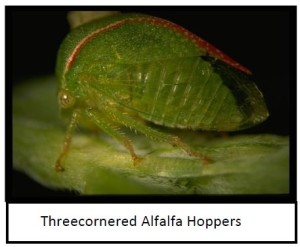General Conditions
This year looks like it will be full of challenges to profitable crop production. While rainfall is always welcome, excessive rainfall for an extended period of time can be as harmful as it is beneficial.
Corn planted before the rain began in February may have suffered from the cold temperatures but most of it is up and looks fairly good. Much of the remaining crops are later than normal.
Generally speaking, later planted crops tend to have more insect problems. In addition, weather issues can become a problem as harvest is delayed into the fall.
Grain Sorghum
Sugarcane Aphids have been found in Johnsongrass in Calhoun, Victoria and Refugio Counties. Fields should be checked weekly for aphids from the time they emerge. While insecticidal seed treatments have been found to be effective controlling aphids for the first 30 days, I prefer to be proactive in searching fields for early infestations.
Read the new guide and more on the Texas Sugarcane Aphid News website at: http://txscan.blogspot.com
Cotton
Cotton I have not seen squaring cotton yet. The insect pest we usually have to manage in seedling cotton is thrips. This pest is usually controlled by the insecticidal seed treatments we have applied to the cotton seed prior to planting.
If you have planted untreated seed, or find thrips in your fields, insecticide applications may be warranted. The economic threshold for thrips in cotton is one per leaf up to cotton with 5 true leaves. After the plants have 5 or more leaves, they are usually considered safe from thrips injury.
Cotton Fleahoppers will be the next pest of interest when the plants begin to set fruit.
Soybeans
Now is the time to be checking soybean fields for three-cornered alfalfa hoppers. The nymphs of this insect will girdle the plant stem causing plants to lodge later in the season.
From “Managing Soybean Insects”
Threecornered Alfalfa Hopper (TCAH), Spissistilus festinus
TCAH adults are green, triangular-shaped and about ¼ inch long and 1/8 inch across the front of the head. The body tapers from front to back. The nymphs are smaller and resemble the adults but possess spines along the ridge of their bodies. The adults overwinter outside fields, move into emerging soybeans and lay eggs in the plants. After hatching, nymphs progress through 5 stages prior to molting into winged adults. These insects have piercing-sucking mouthparts and girdle stems and petioles (small stems attached to leaves and leaflets). Girdle lesions are easily observed encircling the stems and petioles. Damage to main stems of seedling soybeans can cause lodging or death of plants; thus, damage at this early period can cause stand loss. For reproductive plants, feeding can occur on the pedicels and peduncles (small stem-like structures attached to flowers and pods) which can cause abscission of pods or reduction in seed weight.
Scouting for these insects should begin when plants emerge from the soil. Randomly selected row-foot sections at several locations in the field should be examined for fresh damage early in the season. For taller plants, sample with a ground cloth or sweep net. In fields with a history of TCAH damage, increase seeding rates to compensate for expected seedling loss to this pest. The goal is to obtain at least 4 undamaged plants per foot of row. Some plant death due to TCAH girdling before bloom can be tolerated because adjacent plants will fill the row space with no yield reduction.